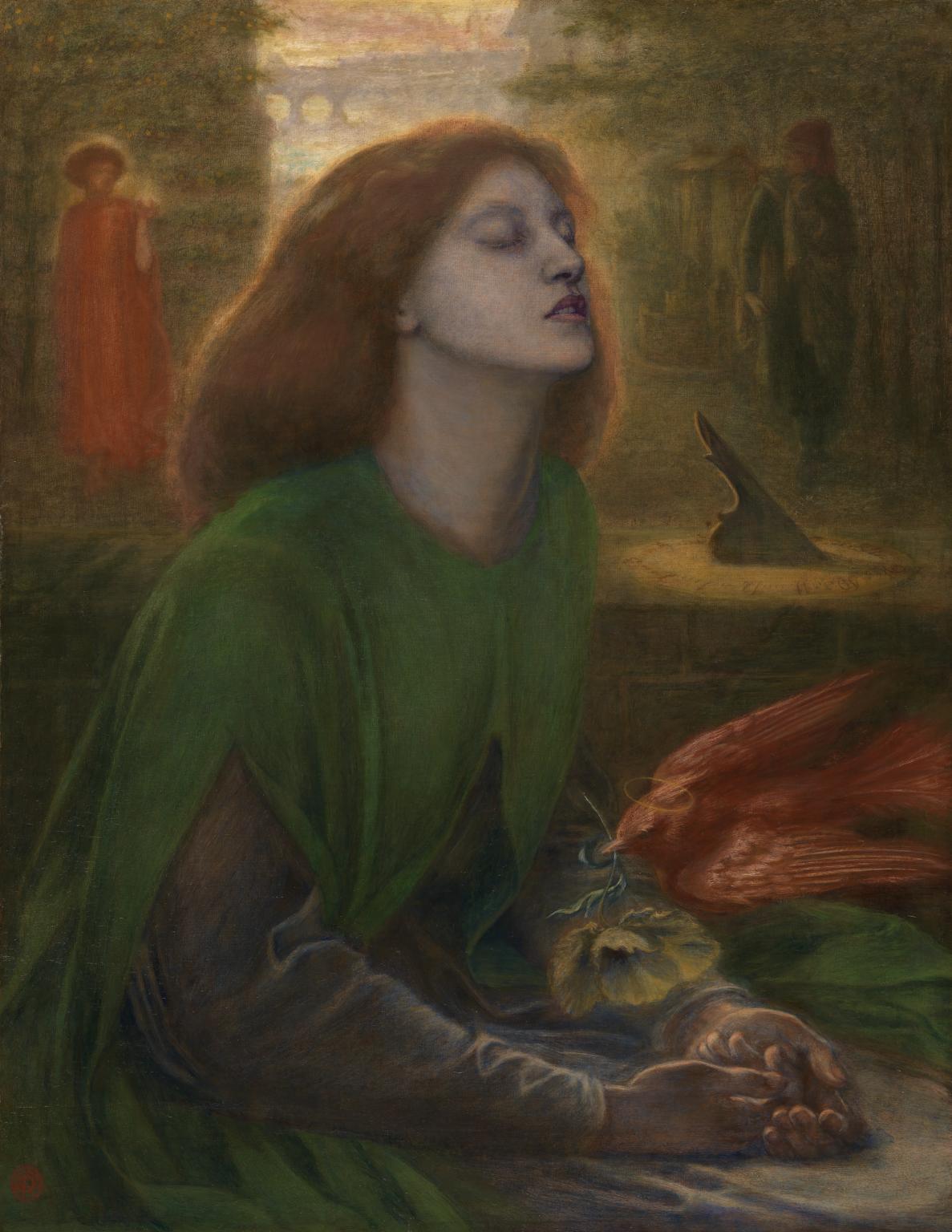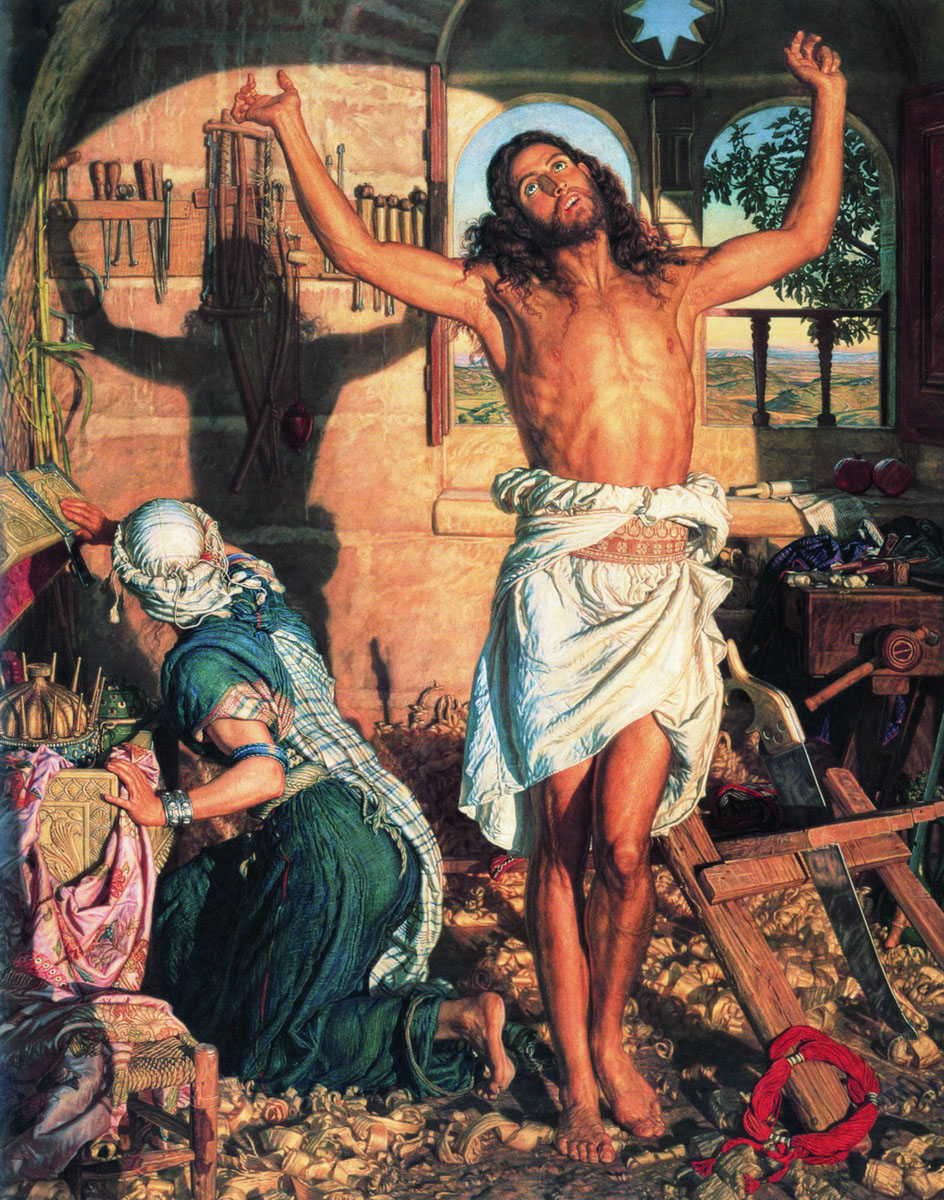1848 – 1854
1. Look for Rossetti’s ideal woman
Most of the Pre-Raphaelite characters are women whose beauty is based on real-life mistresses and models of the English painter Dante Gabriel Rossetti. He was the founder of the Pre-Raphaelite Brotherhood, a secret art society. His most prominent muses were Elizabeth Siddal, Fanny Cornforth, Alexa Wilding and Jane Morris, all of whom conform to a certain feminine archetype, known to the Pre-Raphaelites as the “stunner.” She’s a very tall woman depicted in a stiff pose with loose and long flowing red hair in a variety of shades. Also, she’s got a long, straight nose, a strong jawline, sturdy, long neck and full, pouty lips. Usually, she’s heavy-lidded with a dreamy, distant look in her eyes. Her face shows a melancholy, yet calm expression with a wistful gaze that seems as if you’ve just caught her in the middle of an otherworldly experience. Her ethereal beauty and billowing garments, occasionally in a flowery setting, makes her look like a lone maiden from a medieval fairy tale.

Lady Lilith, by Dante Gabriel Rossetti (models: Fanny Cornforth and Alexa Wilding)

Beata Beatrix, by Dante Gabriel Rossetti (model: Elizabeth Siddal)

Proserpine, by Dante Gabriel Rossetti (model: Jane Morris)

La Ghirlandata, by Dante Gabriel Rossetti (model: Alexa Wilding)
2. Their quasi-religious works were inspired by mythological and biblical stories, and medieval tales (Arthurian legends, for example). Also, literature such as Shakespearean plays and Alfred Tennyson’s poems provided a rich source of subject matter.

The Lady of Shalott, by John William Waterhouse
This painting is an illustration of Tennyson’s ‘The Lady of Shalott’ (part IV):
And down the river’s dim expanse
Like some bold seer in a trance,
Seeing all his own mischance –
With glassy countenance
Did she look to Camelot.
And at the closing of the day
She loosed the chain, and down she lay;
The broad stream bore her far away,
The Lady of Shalott.
 Ophelia, by Sir John Everett Millais
Ophelia, by Sir John Everett Millais
 Hylas and the Nymphs, by John William Waterhouse
Hylas and the Nymphs, by John William Waterhouse
3. With bold irreverence to the religious sensibilities of the time, or even beauty ideals, they painted biblical themes in a harsh, realistic manner. That harkens back to Baroque religious paintings but with a softer, brighter palette.
 Christ in the House of His Parents, by John Everett Millais
Christ in the House of His Parents, by John Everett Millais
 The Annunication or Ecce Ancilla Domini, by Dante Gabriel Rossetti
The Annunication or Ecce Ancilla Domini, by Dante Gabriel Rossetti
 The Shadow of Death, by William Holman Hunt
The Shadow of Death, by William Holman Hunt
 The Finding of the Saviour in the Temple, by William Holman Hunt
The Finding of the Saviour in the Temple, by William Holman Hunt

The Girlhood of Mary Virgin, by Dante Gabriel Rossetti
2. How Pre-Raphaelite art got its name and what gave rise to it?
3. Why the Pre-Raphaelites were rebels?

